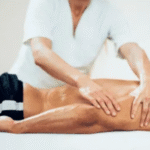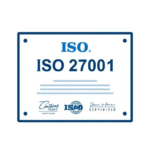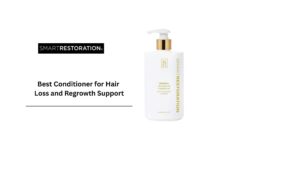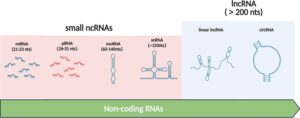Selecting the right dampening rollers is a crucial decision for any printing operation that relies on offset printing technology. These rollers are responsible for delivering a precise amount of fountain solution to the printing plate, which helps keep non-image areas free of ink. A well-chosen dampening roller enhances print quality, reduces waste, and extends the life of your printing press components. Conversely, choosing the wrong roller can lead to poor print quality, increased maintenance costs, and frequent downtime.
This comprehensive guide will walk you through the key factors to consider when selecting the right dampening rollers for your printing press.
Understanding the Role of Dampening Rollers
Before diving into the selection criteria, it’s important to understand what dampening rollers do. In offset printing, the dampening system applies a thin, controlled layer of fountain solution—a water-based liquid—to the printing plate. This layer ensures that the non-image areas repel ink, preventing smudging and improving print clarity.
The dampening roller plays a central role in this process, making the right choice essential for consistent ink-water balance, sharp image reproduction, and smooth press operation.
1. Know Your Dampening System Type
Different presses employ different types of dampening systems, and your roller choice must be compatible:
-
Conventional Dampening Systems: These typically use cloth-covered rollers and require rollers designed for slower, steady moisture transfer.
-
Continuous (Brushless) Dampening Systems: Use rubber rollers that provide even, quick distribution of fountain solution.
-
Alcohol-Substitute Systems (Delta, Alcolor): These advanced systems utilize alcohol substitutes in the fountain solution, requiring chemically resistant rollers.
Identifying your press’s dampening system will help you narrow down the compatible roller types and materials.
2. Choose the Right Roller Material
The material of the dampening roller affects its durability, chemical resistance, and performance:
-
EPDM (Ethylene Propylene Diene Monomer): Excellent resistance to heat, ozone, and water-based fountain solutions, making it ideal for alcohol-free dampening systems.
-
Nitrile Rubber (NBR): Good resistance to oils and solvents but less durable in water-heavy environments.
-
Neoprene: Balanced resistance to chemicals, traditionally used in older press models.
The type of fountain solution and chemicals used in your pressroom should dictate the roller material to prevent premature degradation.
3. Consider Roller Hardness (Durometer)
Roller hardness influences how the dampening roller transfers moisture to the plate:
-
Softer rollers (lower durometer rating) conform better to the plate and adjacent rollers, improving water distribution but may wear faster.
-
Harder rollers last longer but may deliver uneven moisture or cause excessive pressure.
Most dampening rollers fall between 20 to 30 Shore A durometer. Check your press manufacturer’s guidelines or consult with roller suppliers to find the optimal hardness.
4. Check Roller Dimensions and Fit
Precision is key when it comes to roller size and geometry. The roller must match your press’s specifications exactly, including:
-
Length: Should fit snugly without causing misalignment.
-
Diameter: Affects pressure and contact area.
-
Bearing Type: Compatible bearings ensure smooth rotation and reduce wear.
Incorrect dimensions can lead to roller misalignment, uneven moisture transfer, and premature roller or press damage.
5. Ensure Chemical Compatibility
Modern fountain solutions often contain alcohol substitutes and additives designed to improve drying and reduce environmental impact. Unfortunately, these chemicals can degrade some roller materials.
Always verify that your dampening roller is chemically compatible with the fountain solution you use. Incompatible rollers may swell, harden, glaze, or crack prematurely, compromising print quality and increasing costs.
6. Surface Finish and Texture Matter
The surface texture of the dampening roller affects how evenly the fountain solution spreads:
-
A smooth, uniform surface prevents streaks, blotches, and mottling.
-
Some rollers have a slightly textured finish to improve water transfer, depending on press speed and ink type.
Make sure the roller’s finish matches your press requirements for optimal print consistency.
7. Supplier Reputation and Support
Choose dampening rollers from reputable suppliers who offer quality products backed by technical support and warranties. A reliable supplier will provide:
-
Guidance on choosing the right roller
-
Installation and maintenance tips
-
After-sales support for troubleshooting
This support can be invaluable in maximizing roller performance and lifespan.
8. Maintenance Considerations
Even the best dampening roller requires proper maintenance. When choosing rollers, consider how easy they are to clean and maintain. Some roller materials resist ink build-up and are easier to clean, helping reduce downtime.
Final Thoughts
Choosing the right dampening roller for your printing press involves understanding your press’s dampening system, selecting the right materials and hardness, ensuring precise sizing, and confirming chemical compatibility. Paying attention to surface finish and working with trusted suppliers further ensures you get rollers that enhance print quality and press efficiency.
Investing time and effort in selecting the proper dampening roller may seem small but will pay dividends in improved print results, reduced maintenance costs, and longer equipment life. The right roller helps your press run smoothly, delivers crisp, clear prints, and keeps production on schedule.
- How to Choose the Right Dampening Rollers for Your Printing Press
- Learn how to choose the right dampening rollers for your printing press by considering system type, material, hardness, size, and chemical compatibility.
- dampening rollers
Related posts:
 How UAE Fitout Experts Are Elevating Luxury Brand Spaces in 2025
How UAE Fitout Experts Are Elevating Luxury Brand Spaces in 2025
 Sp5der Hoodie: Comfort, Fit, and Real-World Functionality Redefined
Sp5der Hoodie: Comfort, Fit, and Real-World Functionality Redefined
 Discover the Best Full Body Massage Experience in Lancaster, PA with Focused Care Therapeutic Massage
Discover the Best Full Body Massage Experience in Lancaster, PA with Focused Care Therapeutic Massage
 ISO 27001 Training: A Real-World Lifeline to Reduce the Risk of Data Breaches
ISO 27001 Training: A Real-World Lifeline to Reduce the Risk of Data Breaches
 How Instagram Stories Help Businesses: A 2025 gerat Guide ..
How Instagram Stories Help Businesses: A 2025 gerat Guide ..
 “GV GALLERY® || TheGv Gallery Shop || Official Clothing Store “
“GV GALLERY® || TheGv Gallery Shop || Official Clothing Store “
 Don’t Miss Out on today’s Best Sale Offer with Huge Discounts!
Don’t Miss Out on today’s Best Sale Offer with Huge Discounts!
 CPT vs ICD-10 Codes: What Every Medical Biller Needs to Know
CPT vs ICD-10 Codes: What Every Medical Biller Needs to Know







